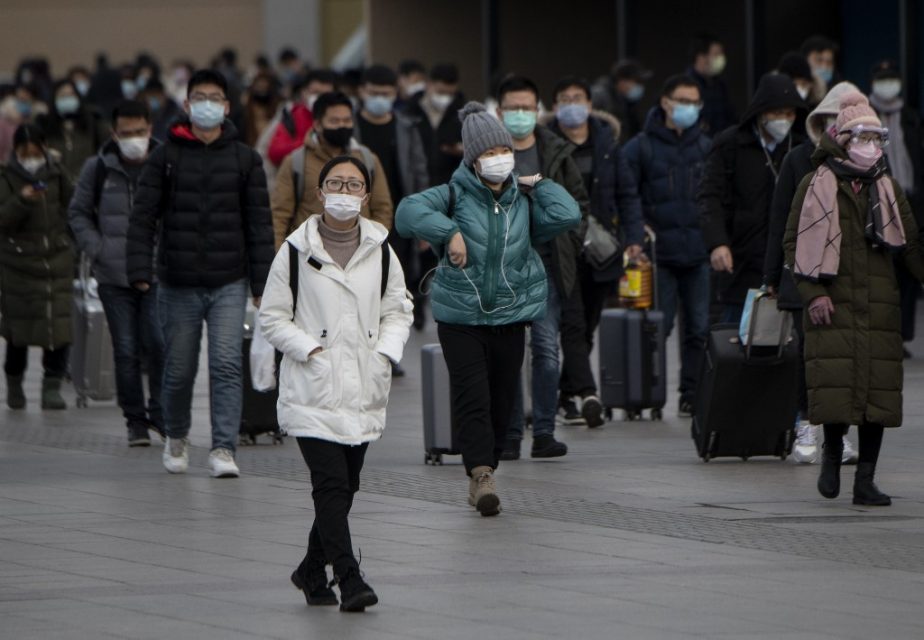
by Helen Roxburgh and Beiyi Seow
BEIJING, China (AFP) — China’s death toll from the coronavirus epidemic soared to 360 on Monday, with deepening global concern about the outbreak and governments closing their borders to people from China.
The fresh toll came a day after China imposed a lockdown on a major city far from the epicenter and the first fatality outside the country was reported in the Philippines.
Authorities in Hubei, the province at the epicenter of the outbreak, reported 56 new fatalities. That took the toll in China to 360, exceeding the 349 mainland fatalities from the 2002-3 SARS outbreak.
Struggling to contain the virus, authorities took action in the eastern city of Wenzhou on Sunday, closing roads and confining people to their homes.
Wenzhou is some 800 kilometers (500 miles) from Wuhan, the metropolis at the heart of the health emergency.
Since emerging out of Wuhan late last year, the new coronavirus has infected more than 16,400 people across China and reached 24 nations.
The G7 countries — Canada, France, Germany, Italy, Japan, the United Kingdom, and the United States — have all confirmed cases of the virus. They will discuss a joint response, Germany’s health minister Jens Spahn said on Sunday.
In Thailand, which has 19 confirmed cases, doctors said Sunday an elderly Chinese patient treated with a cocktail of flu and HIV drugs had shown dramatic improvement and tested negative for the virus 48 hours later.
Most of the infections overseas have been detected in people who traveled from Wuhan, an industrial hub of 11 million people, or surrounding areas of Hubei province.
The man who died in the Philippines was a 44-year-old from Wuhan, according to the World Health Organization, which has declared the epidemic a global health emergency.
China has embarked on unprecedented efforts to contain the virus, which is believed to have jumped to humans from a Wuhan animal market, and can be transmitted among people.
Wenzhou lockdown
China’s efforts have included extraordinary quarantines in Wuhan and surrounding cities, with all transport out banned, effectively sealing off more than 50 million people.
But 10 days after locking down Wuhan, authorities imposed similar draconian measures on Wenzhou, a coastal city of nine million people in Zhejiang province, part of the eastern industrial heartland that has powered China’s economic rise over recent decades.
Only one resident per household is allowed to go out every two days to buy necessities, and 46 highway toll stations have been closed, authorities announced.
The city had previously closed public places such as cinemas and museums, and suspended public transport.
Zhejiang has 661 confirmed infections, with 265 of those in Wenzhou, according to the government.
This is the highest tally for any province in China after ground-zero Hubei.
Closing borders
The United States, Australia, New Zealand and Israel have banned foreign nationals from visiting if they have been in China recently, and they have also warned their own citizens against travelling there.
Mongolia, Russia and Nepal have closed their land borders.
The number of countries reporting infections rose to 24 after Britain, Russia and Sweden confirmed their first cases this weekend.
There were 2,103 new confirmed cases in hardest-hit Hubei province on Monday, bringing the total infected to more than 16,480.
With hospitals in Wuhan overwhelmed, China will open a military-led field hospital Monday that was built in just 10 days to treat people stricken by the virus.
And with the Chinese economy suffering, the central bank announced it would release 1.2 trillion yuan ($173 billion) on Monday to maintain liquidity in the banking system — the day markets re-open after the long holiday break.
Holiday ending
The emergence of the virus coincided with the Lunar New Year, when hundreds of millions travel across the country in planes, trains and buses for family reunions.
The holiday, which was scheduled to end on Friday, was extended by three days to give authorities more time to deal with the crisis.
With many due back at work on Monday, people were starting to return on planes and trains over the weekend, with almost everyone wearing face masks.
Customs authorities had ordered temperature checks at all exit-entry points in Beijing, according to state media.
Returning travellers were being checked and registered at residential compounds, while fever checks were in place in subway stations, offices and cafes.
One 22-year-old arriving at a Beijing train station from northeastern China said her family had urged her to delay her return.
“But I was worried it would affect my job,” she said.
Security guard Du Guiliang, 47, said he would be starting back at work in Beijing on Sunday, after returning from northeast Liaoning province.
“Many colleagues (from Hubei) couldn’t come back. Now, those who work the day shift at our company have to do the night shift as well,” he said.
Many businesses were to remain closed for at least another week, however, while some major cities — including Shanghai — had also extended the holiday.
© Agence France-Presse







